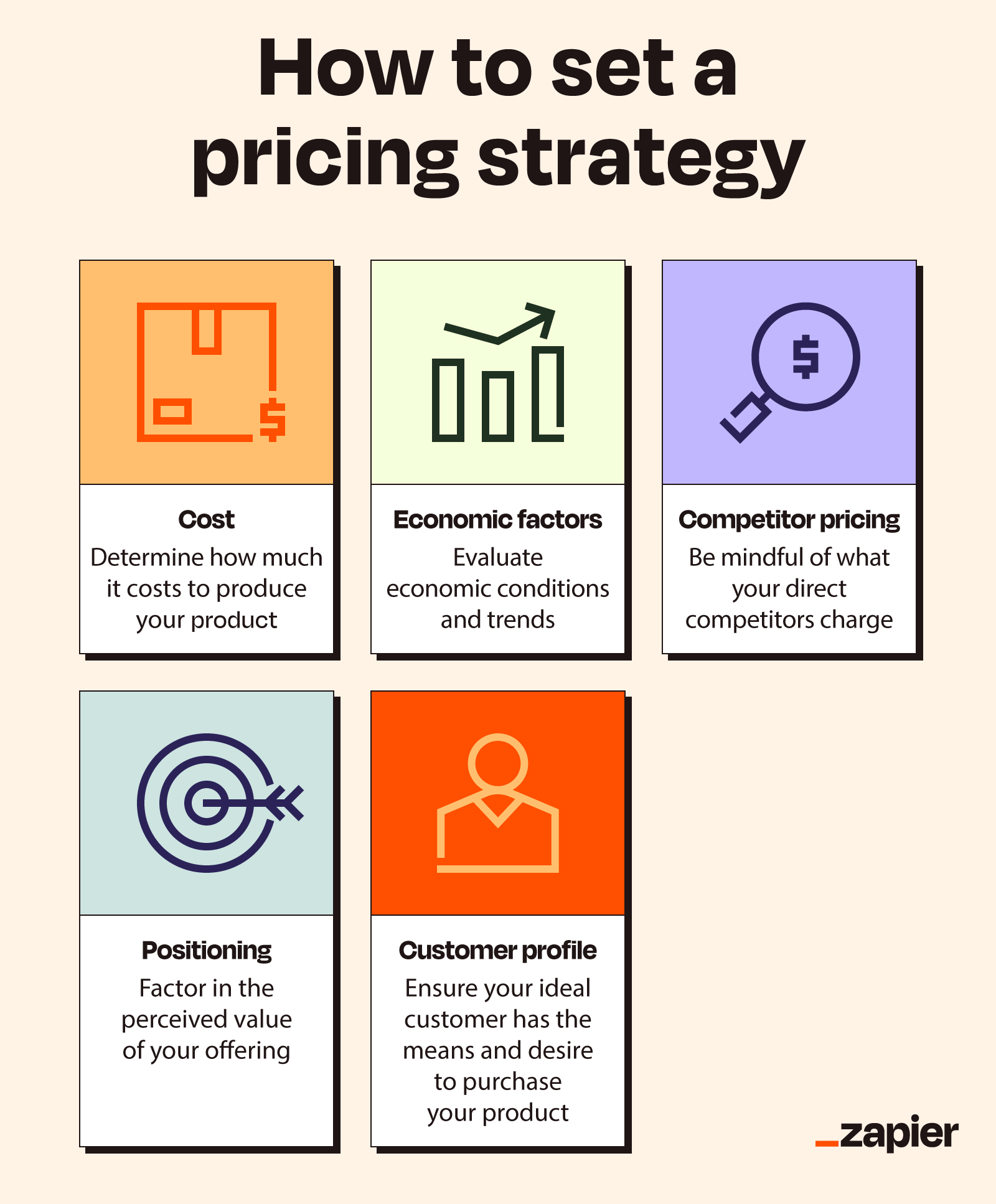The Link In Between Brand Name Positioning and Your Pricing Strategy
The Link In Between Brand Name Positioning and Your Pricing Strategy
Blog Article

Master Effective Prices Strategies to Take Full Advantage Of Profit
In the ever-evolving landscape of business, understanding efficient rates methods is necessary for companies intending to take full advantage of earnings. A nuanced understanding of pricing psychology can significantly affect consumer habits and buying decisions.
Recognizing Prices Psychology
Understanding pricing psychology is important for companies intending to maximize their rates methods. This area checks out exactly how consumers perceive rates and exactly how these perceptions affect their buying choices. Trick principles in prices psychology consist of the anchoring impact, where the first cost offered acts as a recommendation point for consumers, and the concept of rate sensitivity, which varies amongst various customer segments.
Furthermore, businesses can utilize the idea of regarded value, where the viewed benefits of a service or product can justify a greater cost point. For circumstances, costs rates can produce a mood of exclusivity, drawing in consumers who associate greater rates with superior quality. On the other hand, emotional pricing, such as setting a cost at $9.99 rather than $10, can dramatically influence customer behavior by making rates appear more appealing.
Furthermore, deficiency and urgency can boost the perceived worth of products, motivating quicker investing in choices. Understanding these emotional triggers allows companies to create prices strategies that not just drive sales but likewise foster consumer loyalty. Thus, mastering prices psychology is essential for efficient pricing approach formulation, causing boosted profitability and market positioning.
Carrying Out Value-Based Pricing

Next off, sector your consumers based on their readiness to pay and the value they regard. By doing so, you can tailor offerings and prices approaches to line up with different segments.
Continually check market problems and customer feedback to fine-tune your prices technique over time. By executing value-based rates, businesses can enhance profitability while promoting lasting customer loyalty.
Discovering Dynamic Pricing Designs
In today's rapidly changing market landscape, dynamic prices models have actually arised as an effective technique for services looking for to enhance revenue and react to changes popular. These designs allow companies to readjust their costs in real-time based upon different aspects such as customer habits, market patterns, and supply levels. By leveraging data analytics and formulas, businesses can recognize ideal rates points that maximize sales while continuing to be affordable.
Dynamic pricing can take different forms, consisting of time-based pricing, where costs fluctuate based upon time of day or season, and demand-based prices, which changes rates according to current consumer demand. This adaptability not only improves productivity but likewise boosts customer complete satisfaction by using costs that mirror real-time market conditions.
Applying dynamic prices calls for a robust technical infrastructure and a deep understanding of client segments. It is critical for businesses to check market signals and customer reactions constantly, ensuring that rates methods straighten with broader service goals. Clear communication regarding rates adjustments can aid minimize consumer discontentment and foster trust fund, ultimately leading to sustained success in a competitive market. Accepting dynamic rates can hence be a transformative strategy in the pursuit for making best use of revenue.
Analyzing Competitor Pricing
Keeping an eye on rival pricing is necessary for companies intending to keep an one-upmanship in their respective markets. By examining competitors' pricing approaches, companies can recognize market fads, recognize consumer preferences, and adjust their prices accordingly. This evaluation involves celebration data on competitors' rates, advertising strategies, and item offerings to notify rates choices.
To properly evaluate competitor pricing, businesses ought to utilize numerous tools and methods, such as cost tracking software, market research study reports, and client feedback. This data can expose just how rivals position their solutions and products, allowing services to separate their offerings or embrace similar have a peek at this website techniques to remain appropriate.
In addition, it is vital to categorize competitors right into indirect and straight competitors. Straight rivals offer similar services or products, while indirect competitors might fulfill the very same consumer requirement with various services. Comprehending the subtleties between these teams will certainly allow businesses to tailor their prices approaches much more successfully.
Inevitably, ongoing competitor prices analysis is essential for making informed prices decisions. It allows organizations to continue to be nimble in reaction to market changes, ensuring they can seize opportunities and alleviate risks linked with rates approaches.
Assessing Pricing Efficiency
Understanding exactly how rival pricing affects market dynamics results in a official website natural concentrate on examining pricing performance within one's very own business. This analysis is critical for identifying areas of stamina and chances for renovation, eventually enhancing profitability.

Additionally, conducting routine rates audits can reveal disparities between anticipated and actual performance. This includes comparing rates information across various sectors and channels to comprehend differences and recognize patterns. Additionally, incorporating consumer feedback can give insights right into perceived worth versus real rates, making sure positioning with market assumptions.
Finally, leveraging information analytics tools can assist in much deeper understandings into rates efficiency, making it possible for businesses to make data-driven modifications (Pricing Strategy). By continuously assessing prices performance, organizations can adjust to market modifications and maximize their strategies, making sure continual earnings in an affordable landscape
Final Thought
By leveraging pricing psychology, companies can improve regarded value and dressmaker pricing to diverse client segments. The adoption of dynamic and value-based pricing versions helps with real-time changes based on need and client willingness to pay.
Understanding prices psychology is crucial for services intending to optimize their prices approaches. Comprehending these psychological triggers enables companies to formulate This Site prices strategies that not just drive sales yet likewise foster customer commitment. Therefore, mastering rates psychology is crucial for efficient prices method formulation, leading to boosted success and market positioning.
By evaluating competitors' rates methods, firms can recognize market patterns, recognize consumer choices, and adjust their rates accordingly. By leveraging prices psychology, companies can enhance viewed worth and dressmaker rates to diverse client sectors.
Report this page